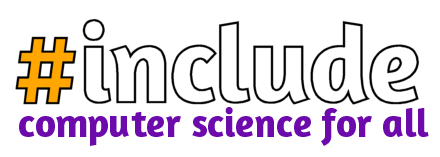This series of posts aims is aimed at UK secondary school teachers to give some free ideas and resources in order to help make computing lessons engaging and inclusive in order to help attract more and more students to continue with the subject at GCSE and beyond.
When students are choosing their GCSE options they seem to love asking teachers why we chose to teach our subjects.
Often, I can almost see the cogs turning inside some of my students’ heads, weighing up whether they should choose Computing over Art; ticking off the benefits of each subject as they make the first real choice that might affect the rest of their lives.
Whatever they use to make up their mind – who teaches the subject / what their friends are choosing / what they’re good at / what they enjoy – there’s clearly a lot more that we can do to promote Computer Science as a viable, challenging, enjoyable and worthwhile option. The national figures show a pretty poor GCSE uptake of GCSE Computer Science compared to other eBacc subjects and an abysmal uptake by girls. Boys, whilst outnumbering girls at KS4 and beyond, are being outperformed by girls from KS2 onwards. So there’s definitely something not right there that needs addressing.

CAS #include. Making computing accessible for all
I’ve been slowly working through the brilliant advice on the CAS #include site about how to ensure that my Computing lessons aren’t just catering for people like me and it strikes me that the way to be inclusive for all also looks and sounds like the way to be engaging and stretching for all. This post aims to share some of the mistakes I’ve made as well as some of the things I’m trying to put right to make sure that all students get the most out of their computing lessons, hopefully also boosting recruitment at KS4 too.
I’ve come up with 6 Cs to use as a checklist for planning engaging and inclusive computing projects:










